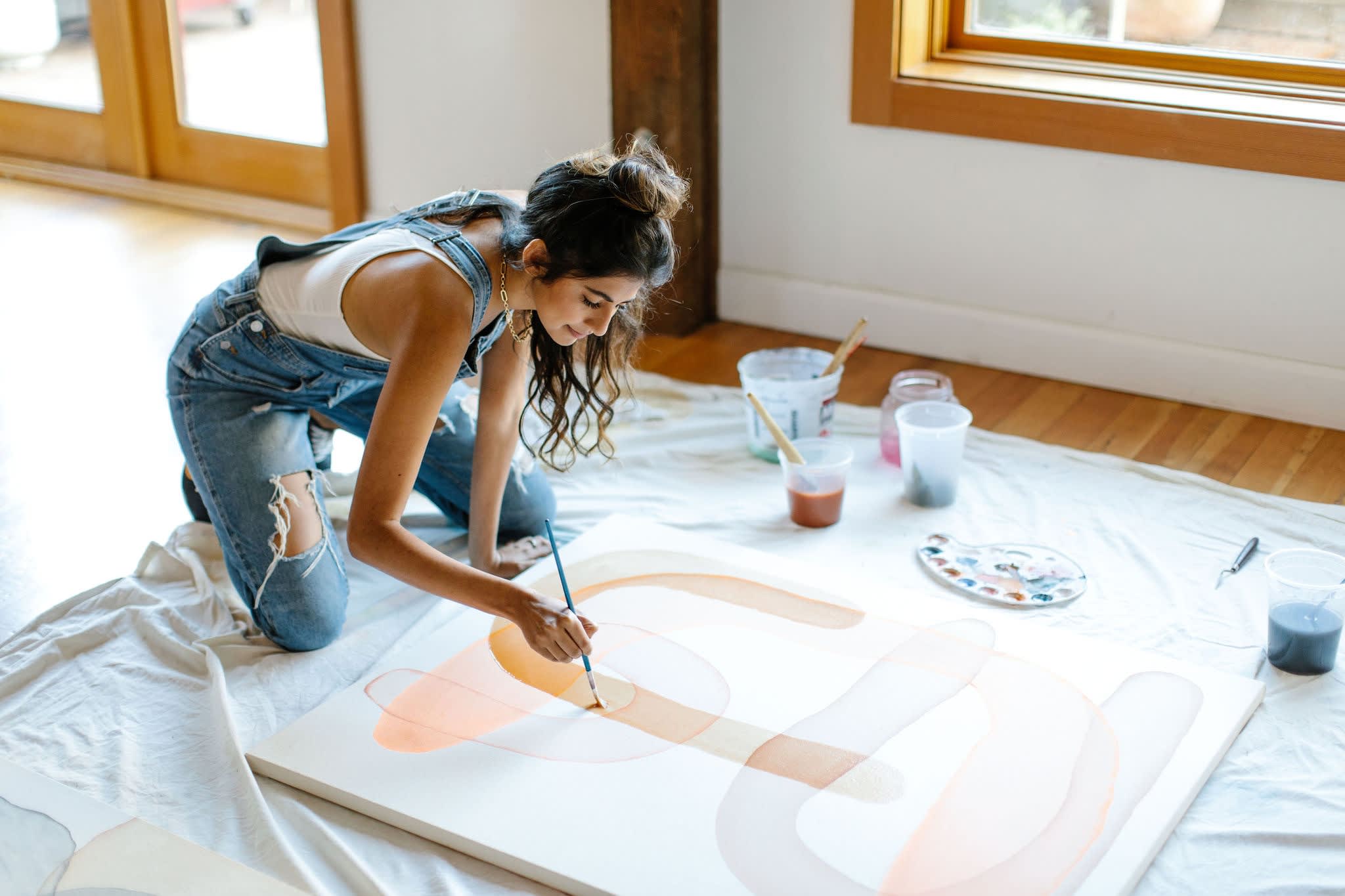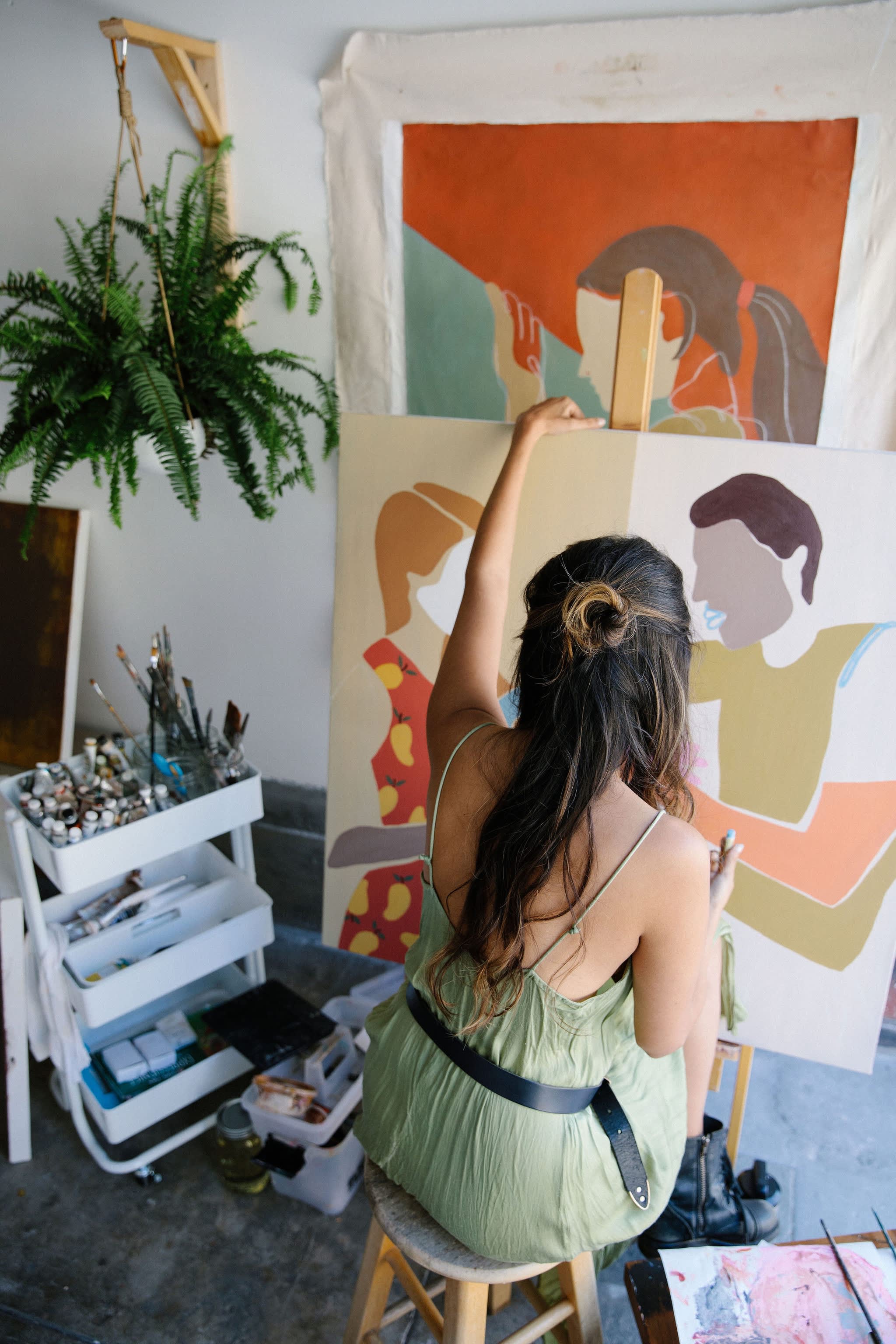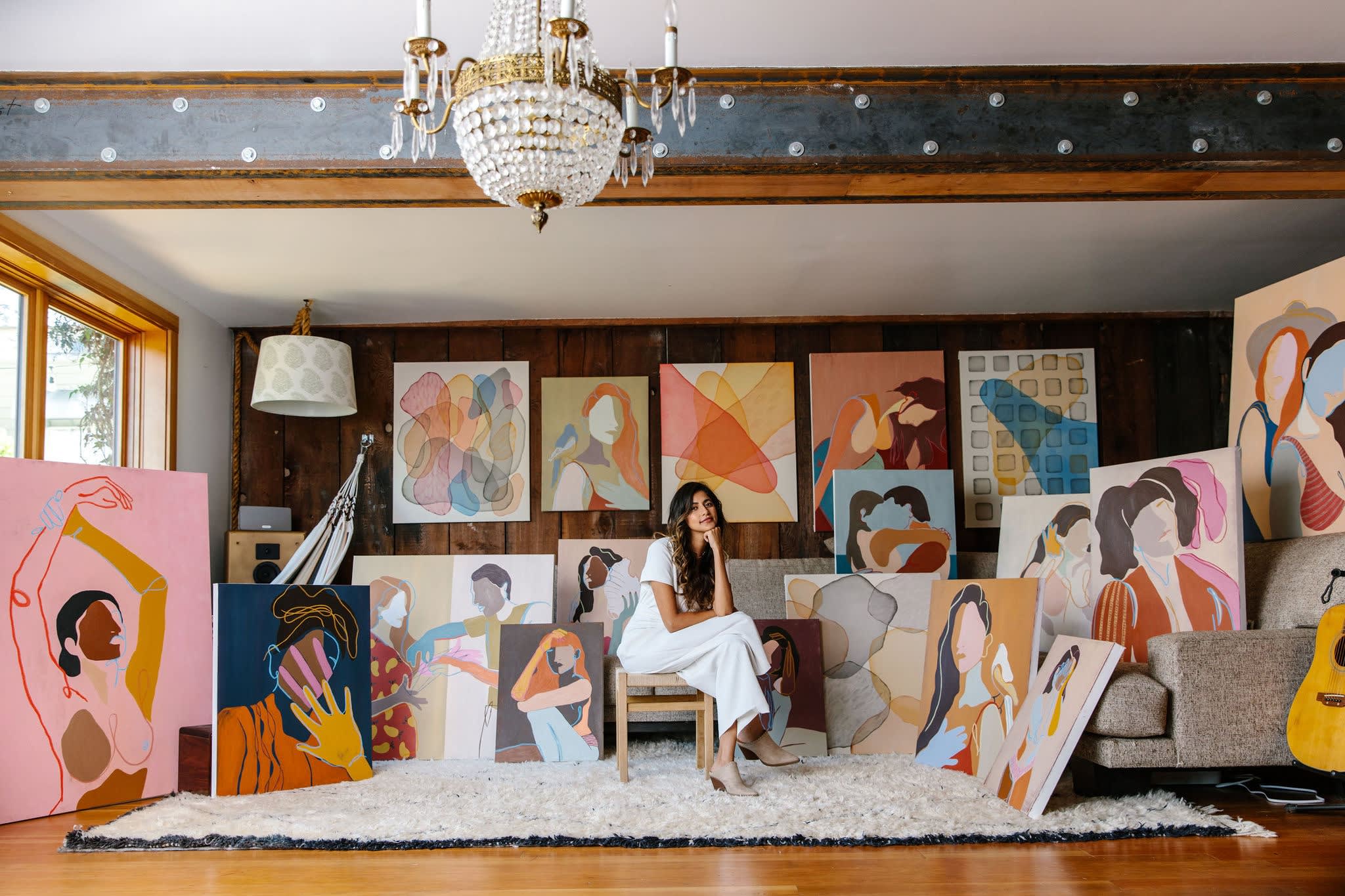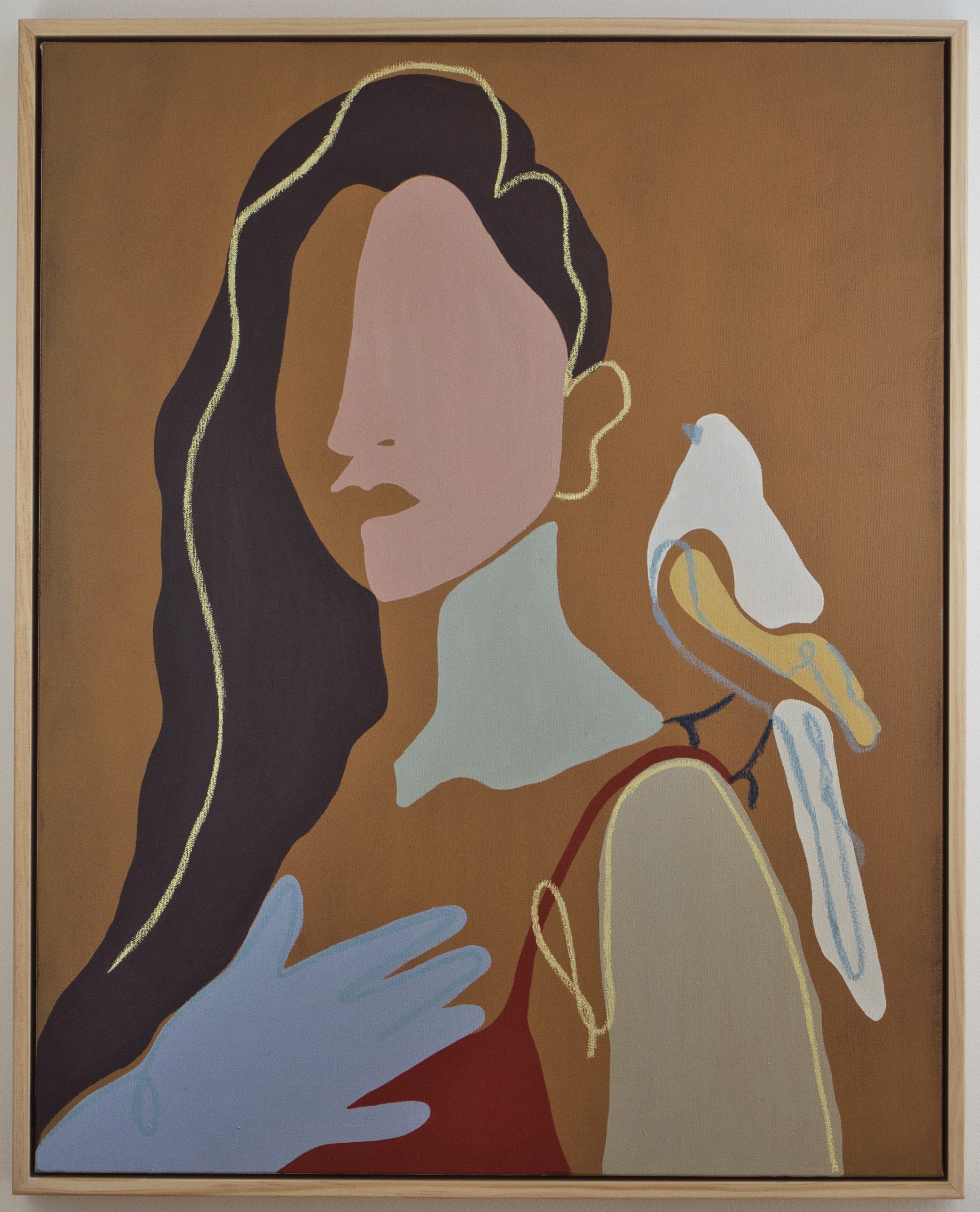Anoushka’s art practice stems from memories of her childhood in India and her personal discoveries and growth in the United States as a migrant woman. As a teenager, she turned to a visual language of shapes and forms to express her inner dialogue on navigating a patchwork identity and asserting herself as a female navigating a male-dominated industry. As Anoushka Mirchandani's debut solo exhibition 'Just Between Us' is fast approaching, we caught up with the artist about her incredible art journey and practice.

The Pandemic has affected all aspects of life, could you explain how it affected your making process and the influence it’s had on the themes in your artwork?
The Pandemic, and ensuing isolation allowed me to create my new works for "Just Between Us" from a very reflective and personal space. It was challenging at times because it felt as though I was looking at myself in the mirror 24 hours a day. I considered my identity, my psyche and what it is that I want to convey through my latest works. Constantly reflecting on yourself and the context of your surroundings can be exhausting, and I had to often remind myself to stay playful, while being intentional. The paintings that have been created over the last few months as a result, touch on notes of intimacy, hope, and re-entry into society, with a quiet sense of freedom. They reflect on one’s relationship with yourself, your closest companions, and immediate environment, indoor and outdoor.
Your artwork seems to convey your personal journey, from your gender and identity to exploring your culture. When did you begin expressing yourself through art?
Ever since I can remember, I was creating, doodling, drawing - I have always been drawn to very sensory experiences of the world. It often seems less complex to transmute my understanding of experiences and interactions visually, as opposed to verbally. Vulnerability was not a learned value in Indian culture and my upbringing, and I turned to a visual language of shapes and forms in order to express my inner dialogues.

What would you say are the biggest challenges as a female artist in a male dominated landscape?
Personally speaking, I have always implicitly understood that in order for me to achieve my goals, and be recognized by long-standing cultural institutions that have historically overlooked female artists, artists of colour and immigrants, it is imperative that I work harder to gain access to the spaces that have favored male artists. This is also evidenced by recent studies conducted by ArtNew news & In Other Words that showcase how from 2009-2019, only 11 percent of all U.S top museum acquisitions have been of work by women. Clearly, there is a vast gender inequality in the art industry, and I can only hope that these biases will be addressed across the industry, by curators, arts organizations, museums etc.
The female body seems to take an important place in your work, what inspires you about this subject matter?
Growing up in India where as a young girl you are taught to constantly look over your shoulder, be self-conscious of your clothing, and be fearful of showing "too" much skin, fractured my relationship with my body, and instigated feelings of associated fear and shame. This provoked me to create works that reclaim the power and beauty of a woman’s physicality , and in turn repair the damaged relationship with my own body. Delving deeper, I am essentially fascinated by how a woman’s outer world—built by her history, cultural context and sociopolitical environment—shapes her inner world. I am motivated by depicting raw and honest portrayals of women and their internal mindscapes while deconstructing the myths surrounding the role of women, and the female body.

Intimacy is conveyed as a central theme in your work. The viewer feels as though they are looking into quiet, private moments. Why is intimacy an important theme for you as an artist?
During the pandemic, intimacy in various different forms has played a large role in my day to day existence. My personal definition of intimacy has expanded past romance to include the close relationships I have forged with myself, my values and mission, my home, plants, animals, and the inanimate objects, and symbols that surround me. I have cultivated intimacy in so many forms during this time of isolation and reflection, and I want to share these bonds, and invite viewers into these private moments with me. I have been contemplating recently how to uphold and bring forth this nurtured sense of closeness into the world, as each of us tentatively re-enter society with a renewed sense of hope and freedom.
A lot of people will be able to resonate with the figures in your works as we all were limited to interacting with only those close to us and ourselves! Are the works based on people you know or your family members?
Yes, my works draw from memories of my childhood in India, my immediate surrounding community of friends and family and my physical environment in California. Although the works include portraits of aforementioned friends and family, given the locked-down nature of the world over the last few months, many of the works are self-portraits, revealing self-reflection, personal growth, moments of respite, and coming face to face with my own history, nature and being.

What does the future hold for your practice?
Excavating the intricacies of South Asian diasporic identity and womanhood are core to my practice, and I want to continue developing and exploring these themes. This past year has brought many racial injustices into sharp focus, and the recognition of the ongoing inequity has galvanized my dedication to my practice, and as an ally. While we are poised for critical change, art is a powerful vehicle that can spearhead inclusion, bring Othered perspectives out of the shadows and shift cultural narratives. I aim to be a part of that movement, with a focus on women’s voices from immigrant and diaspora communities. Additionally, I have also been drawn recently to public art projects, and recognize that it is critical for artists of color to affirm our existence in the public spaces we occupy. I hope to have the opportunity to activate public spaces through my practice in the near future.
For all enquiries, please contact info@rhodescontemporaryart.com